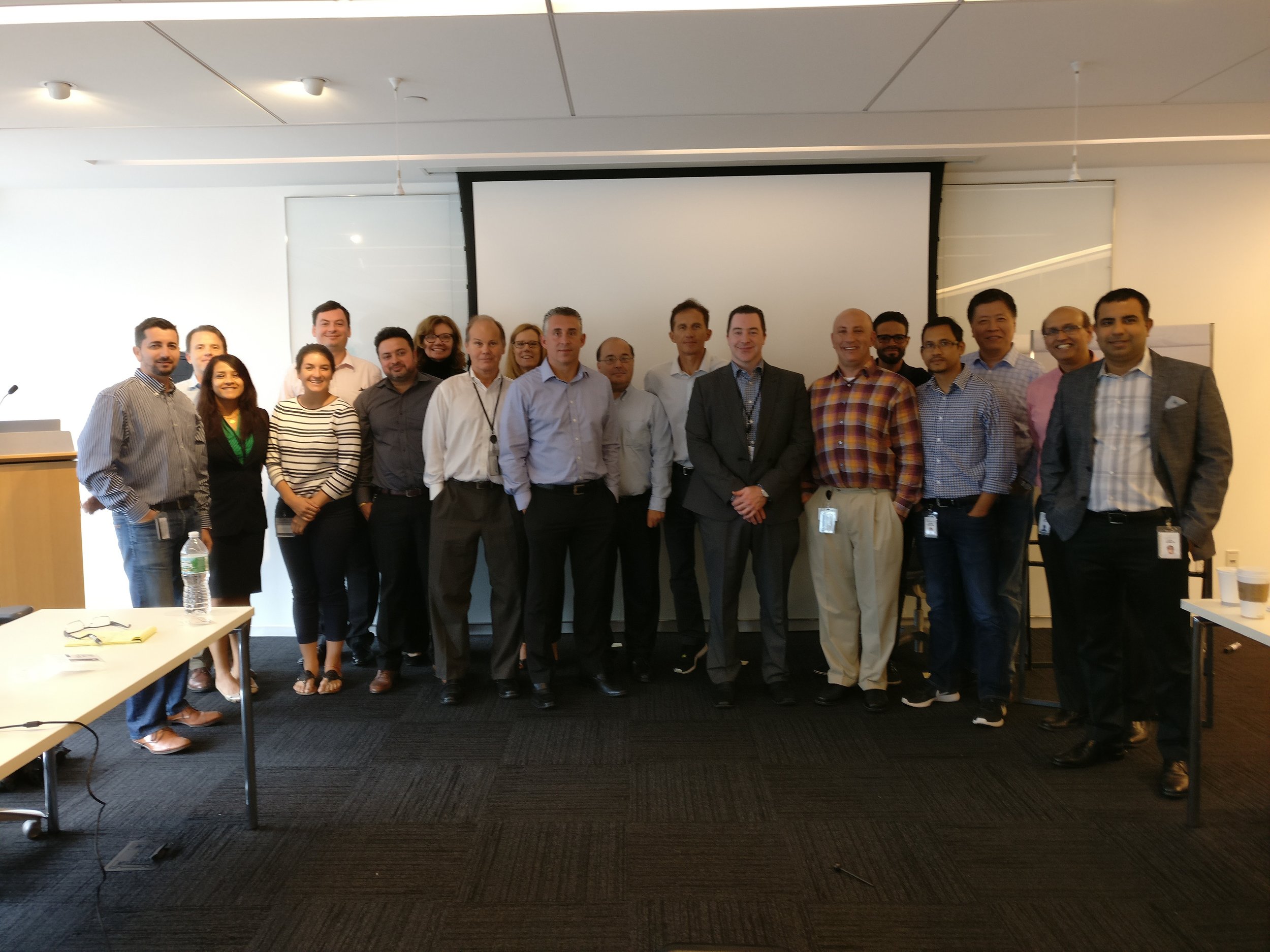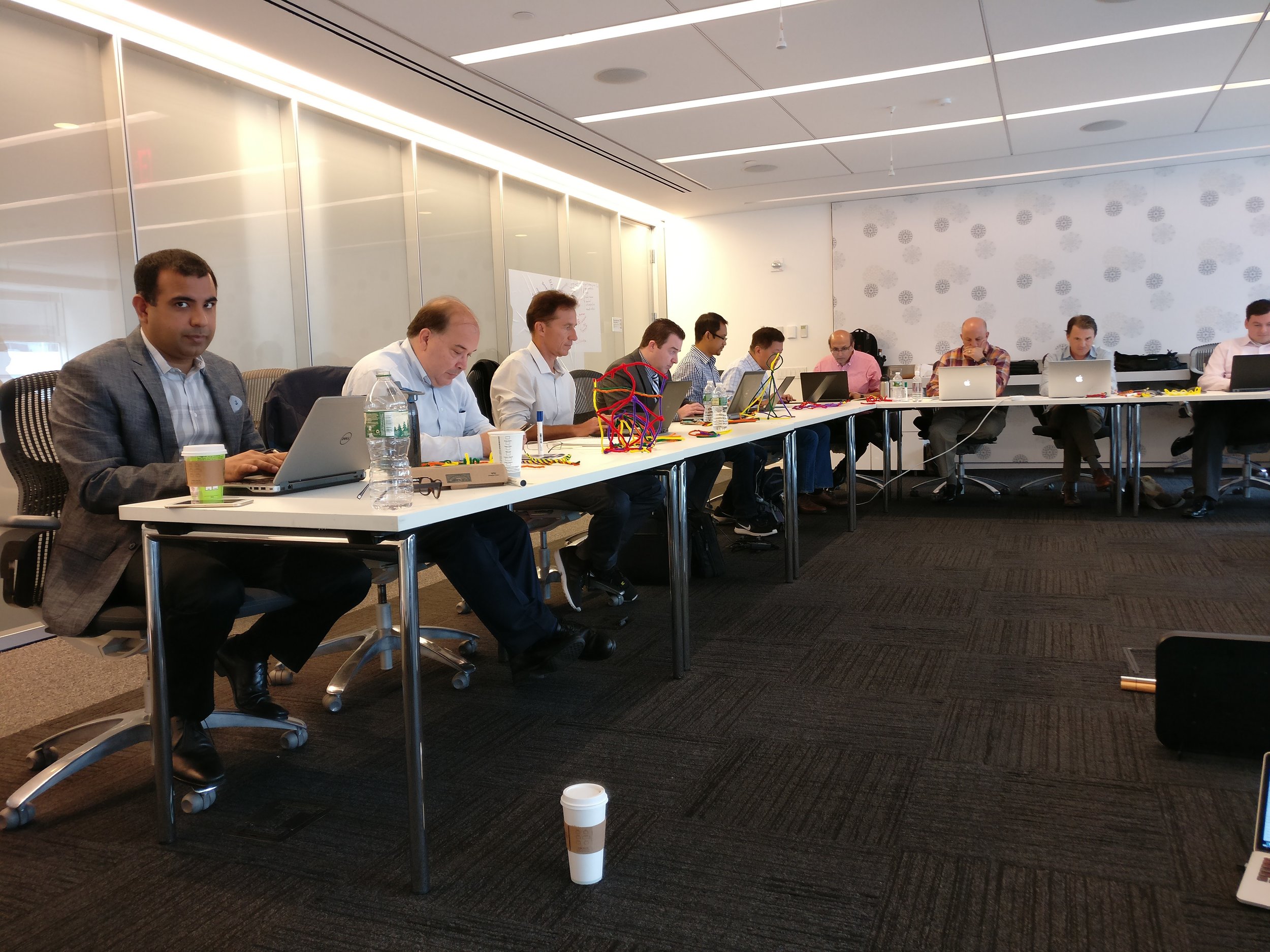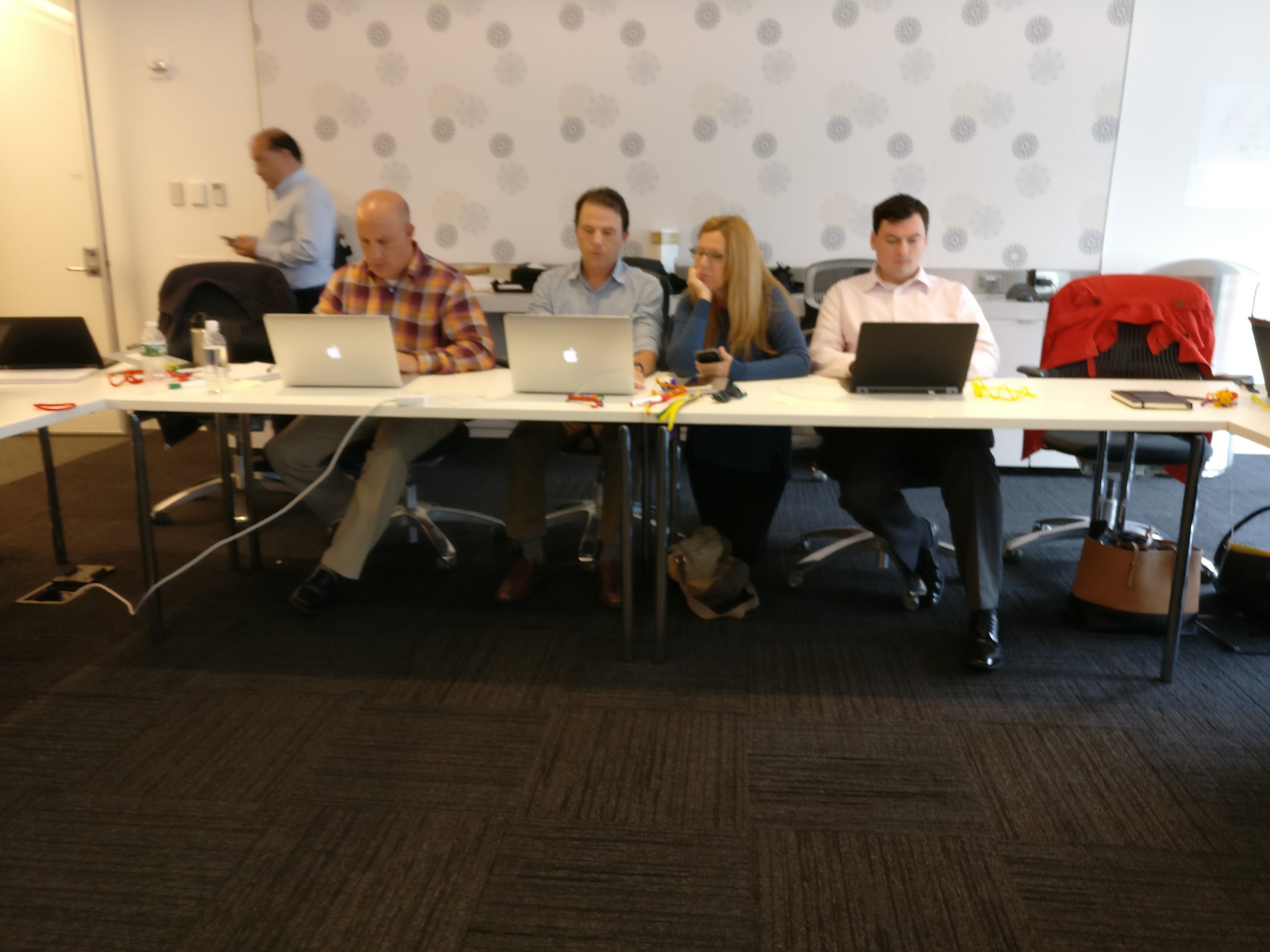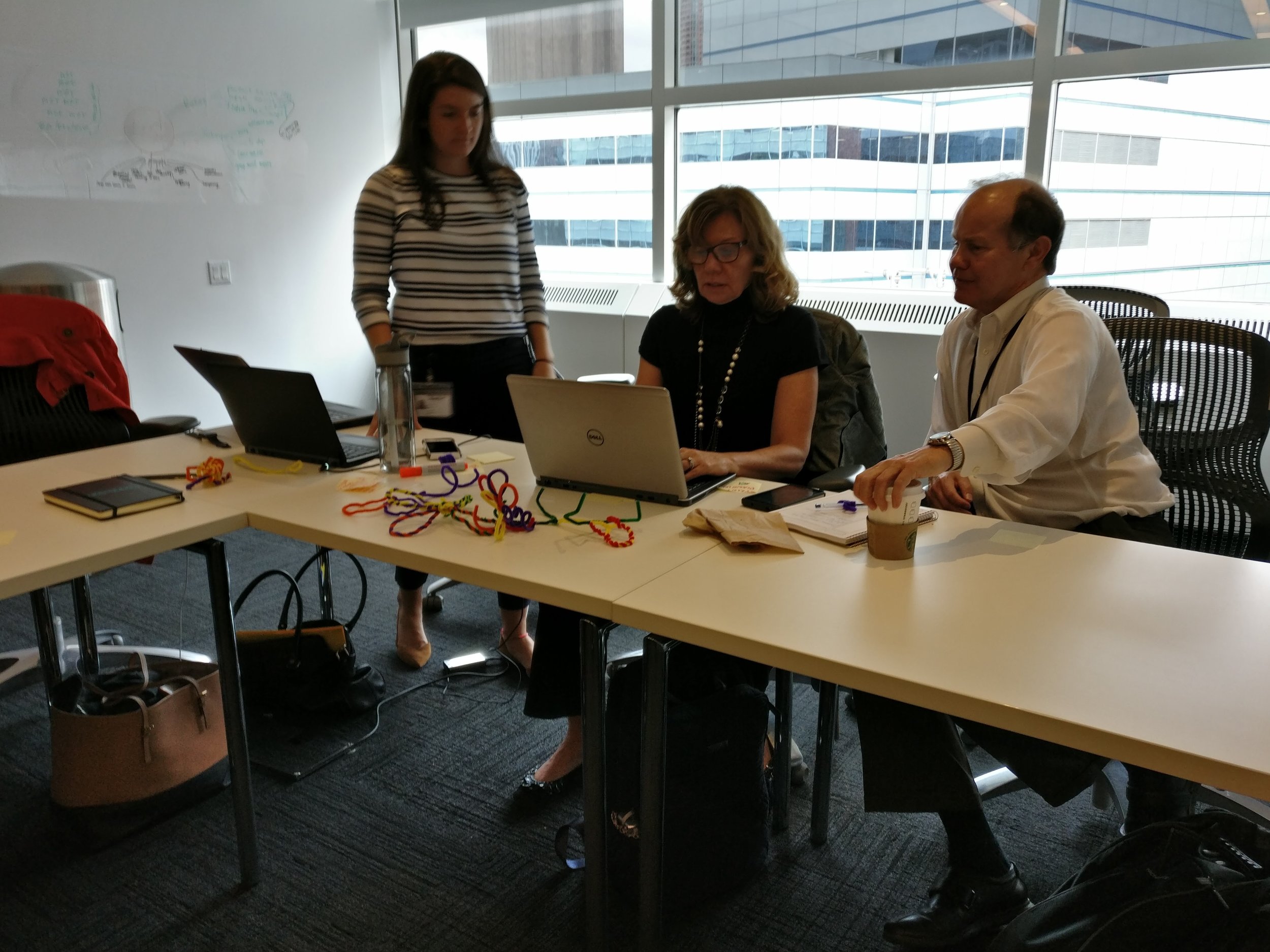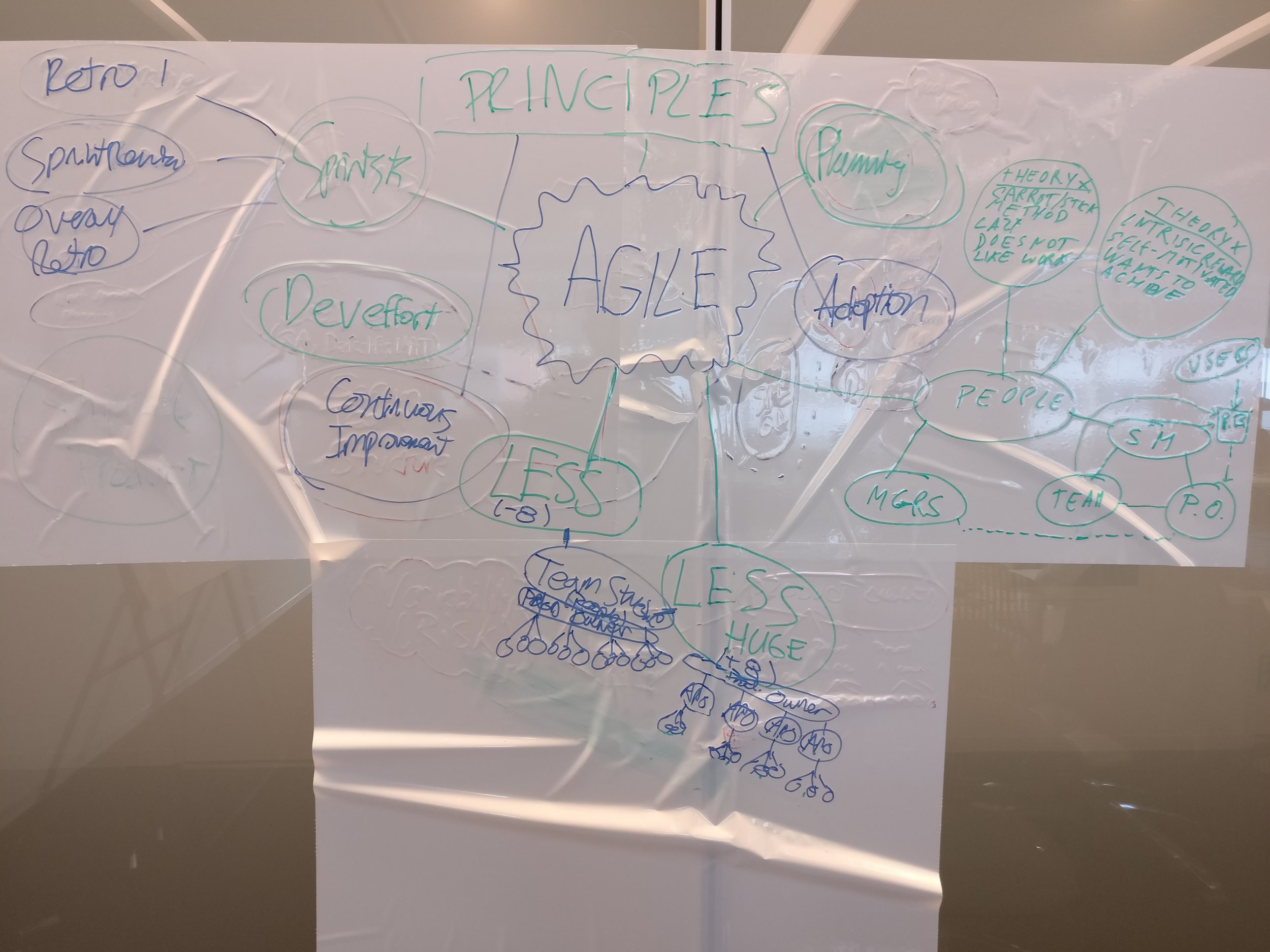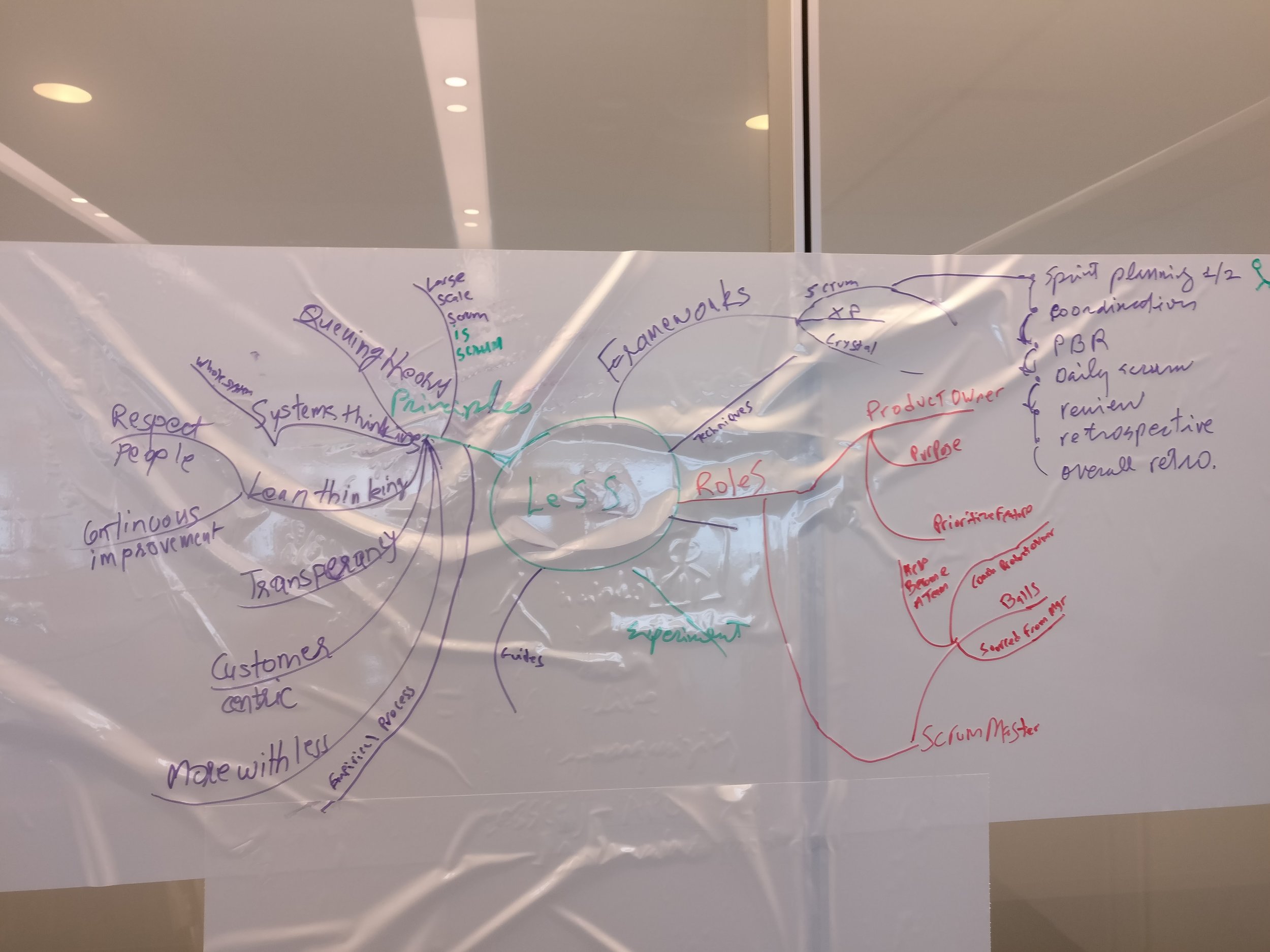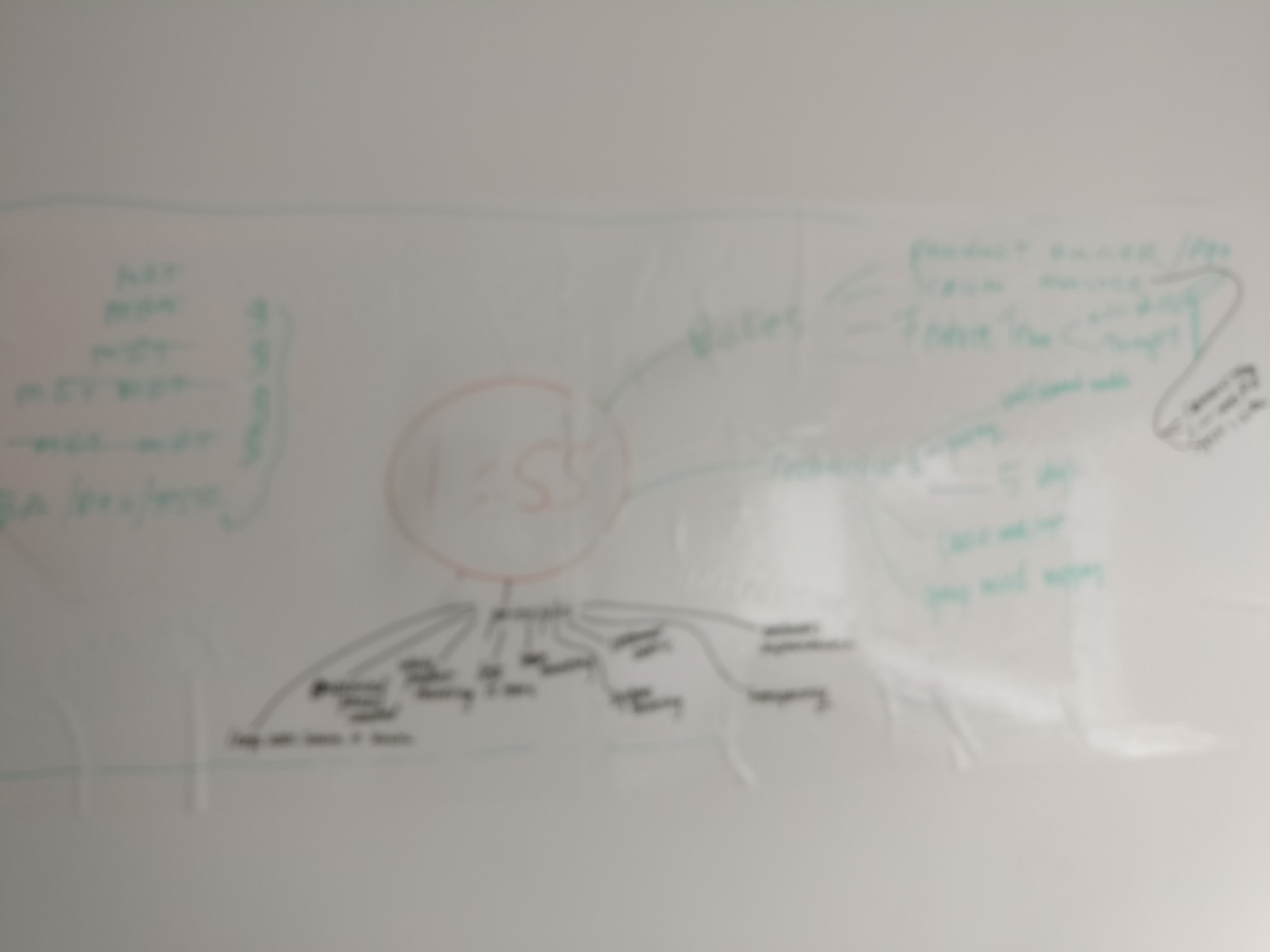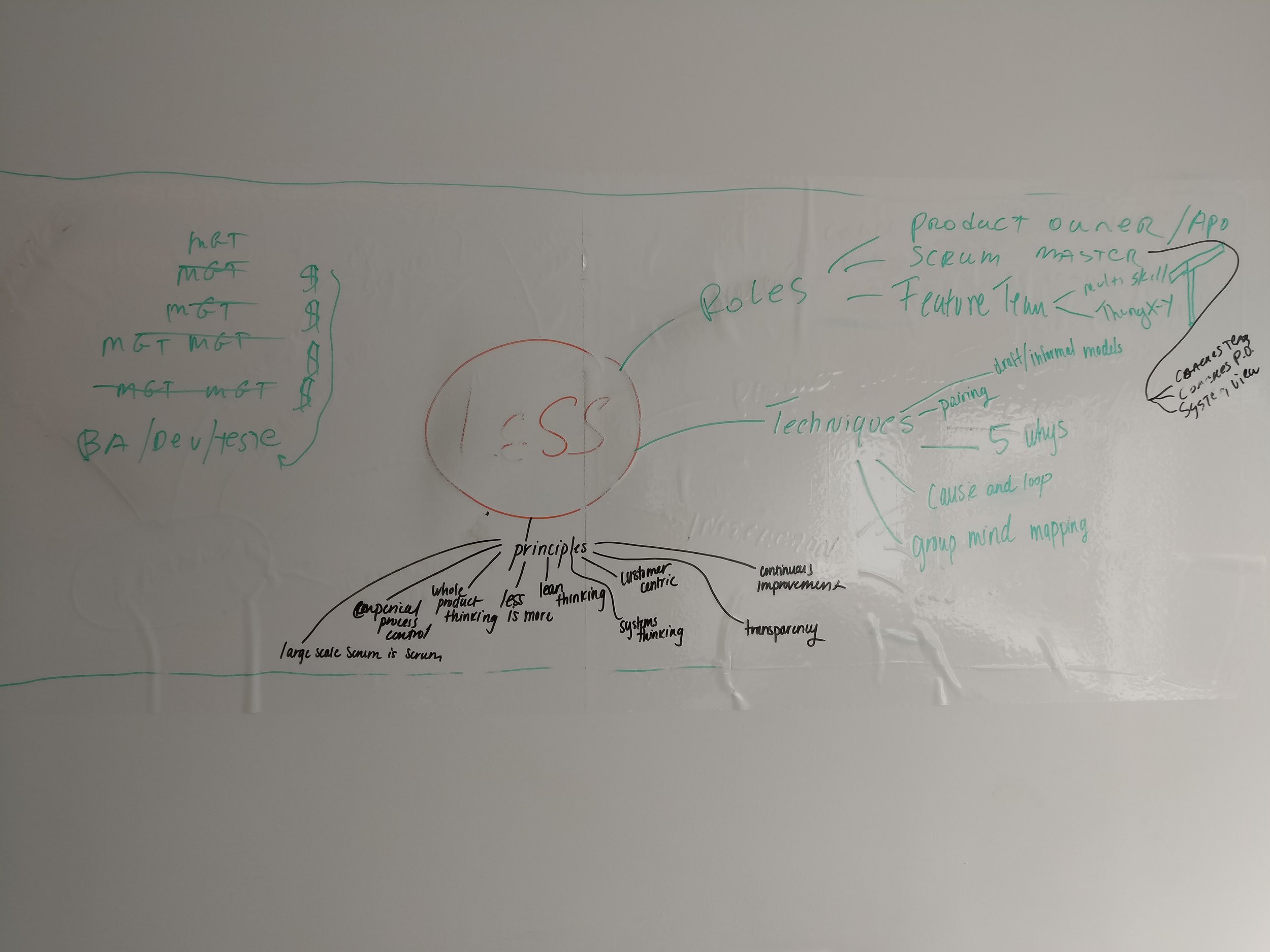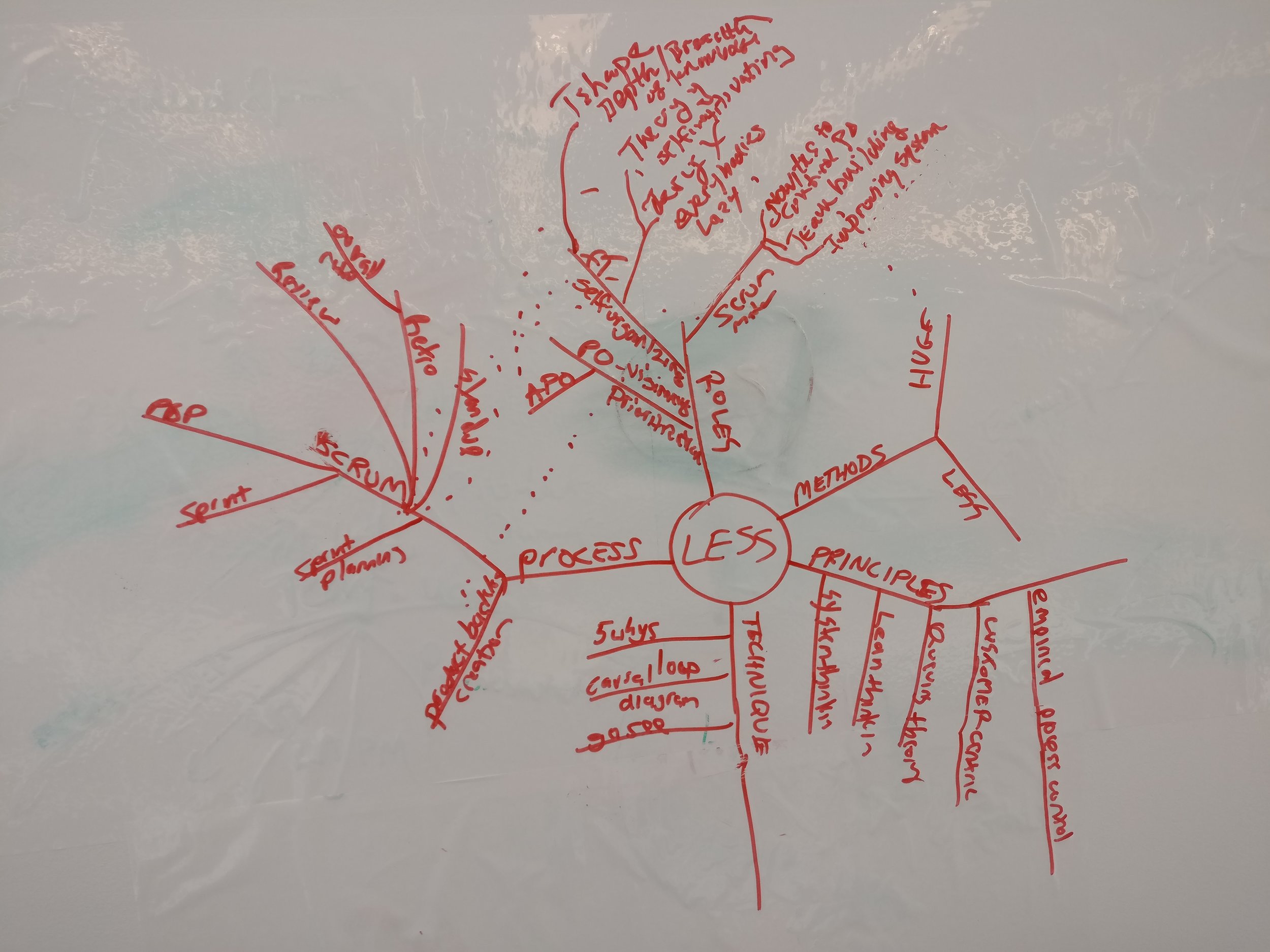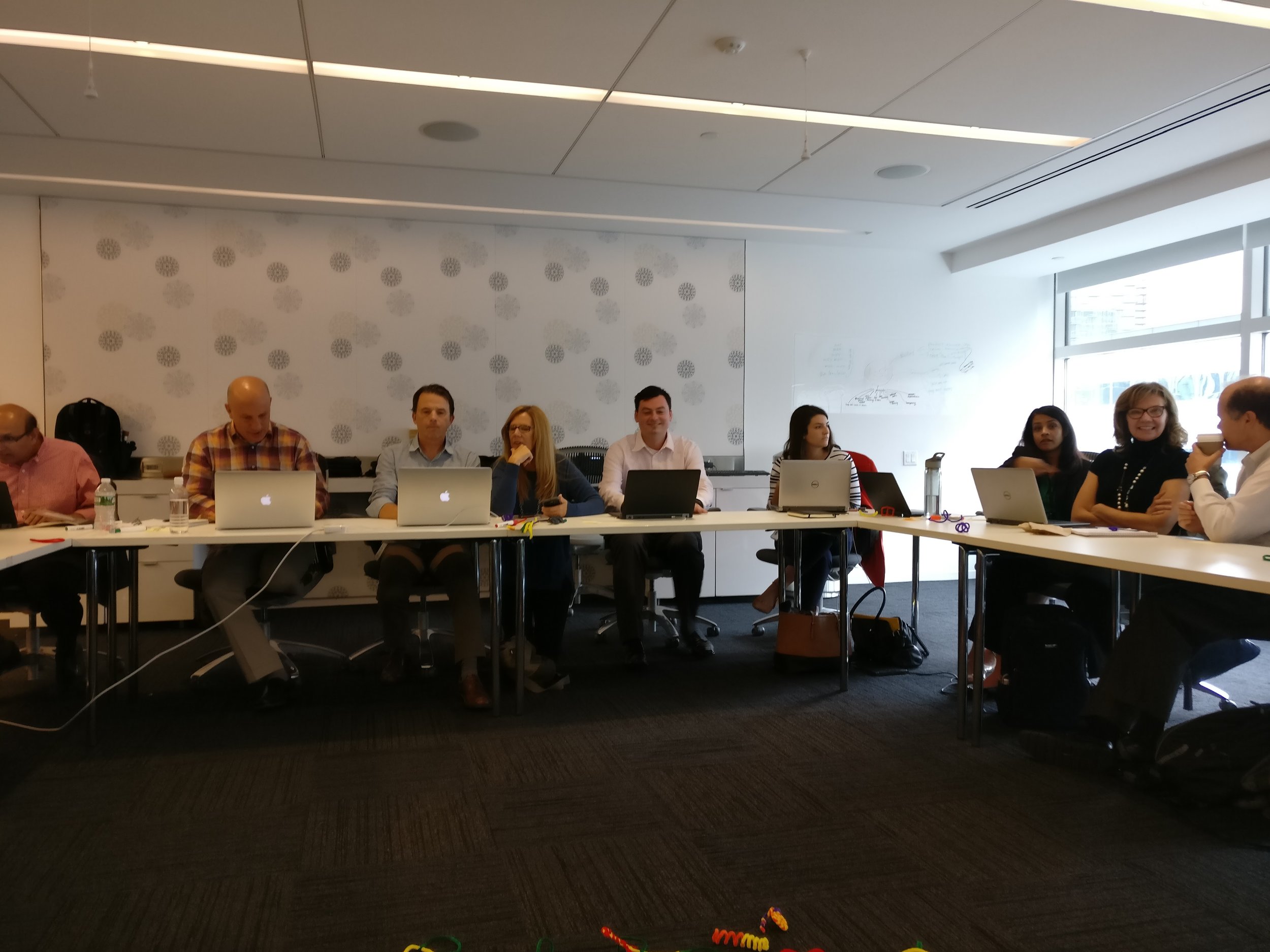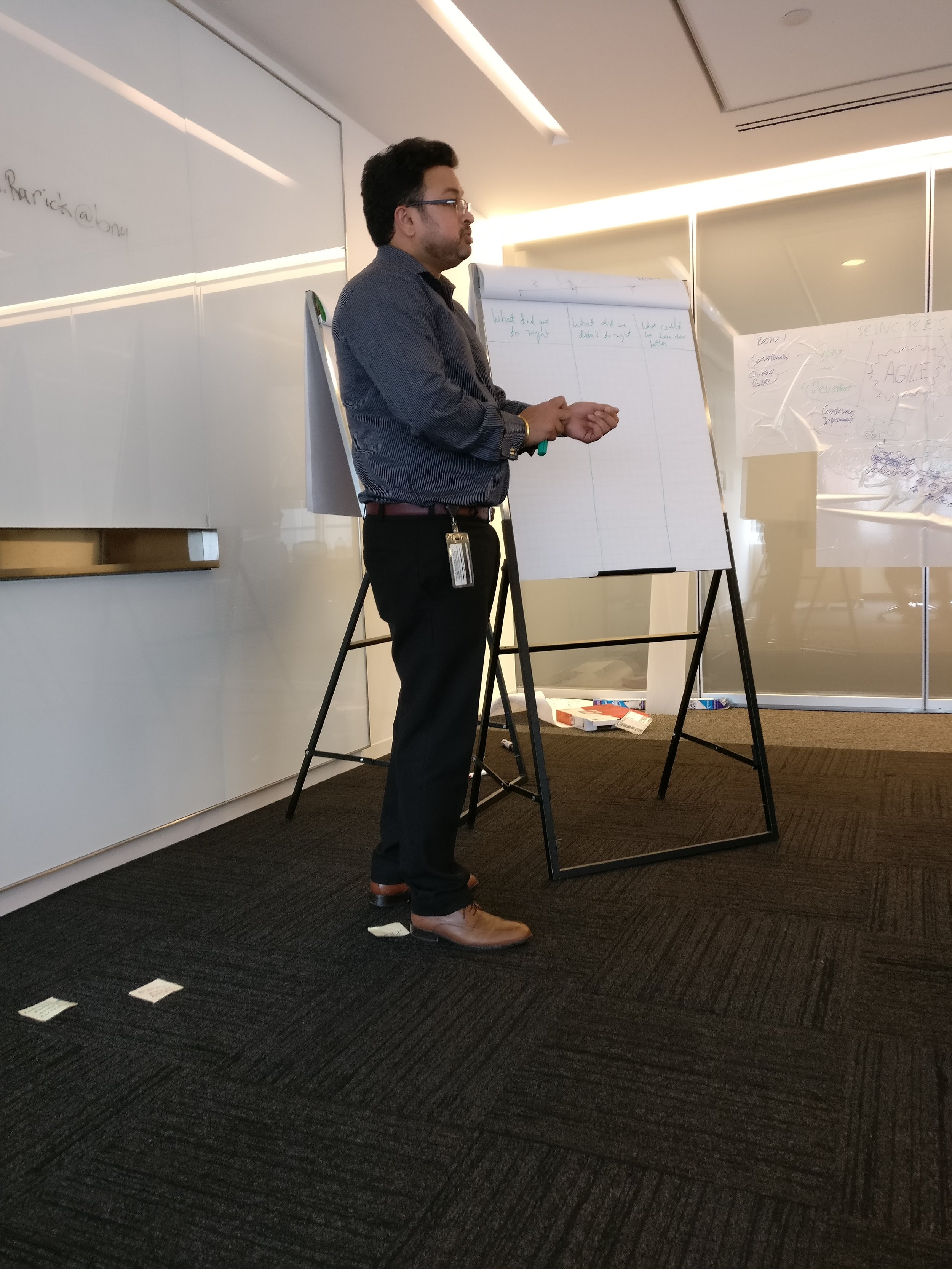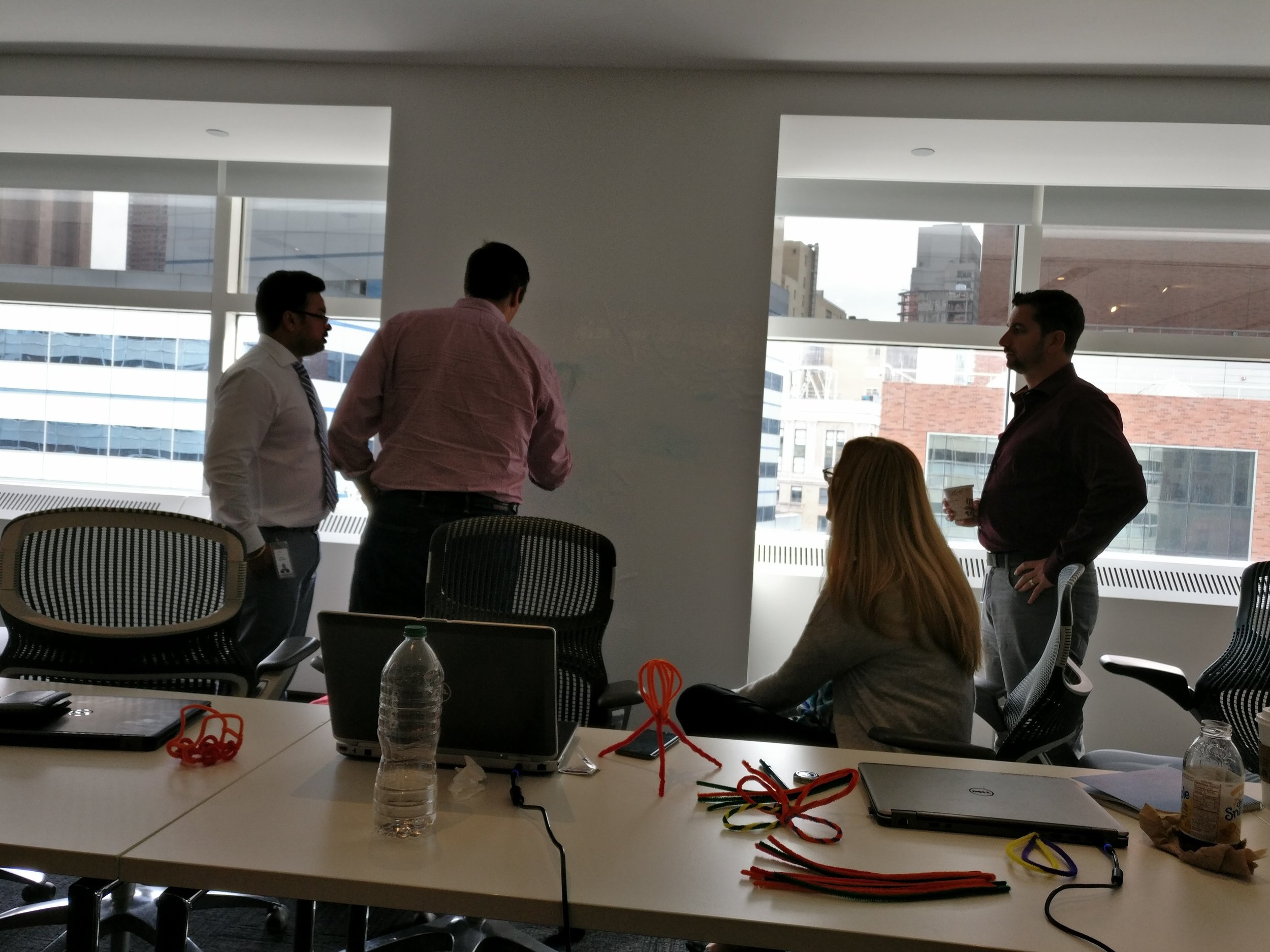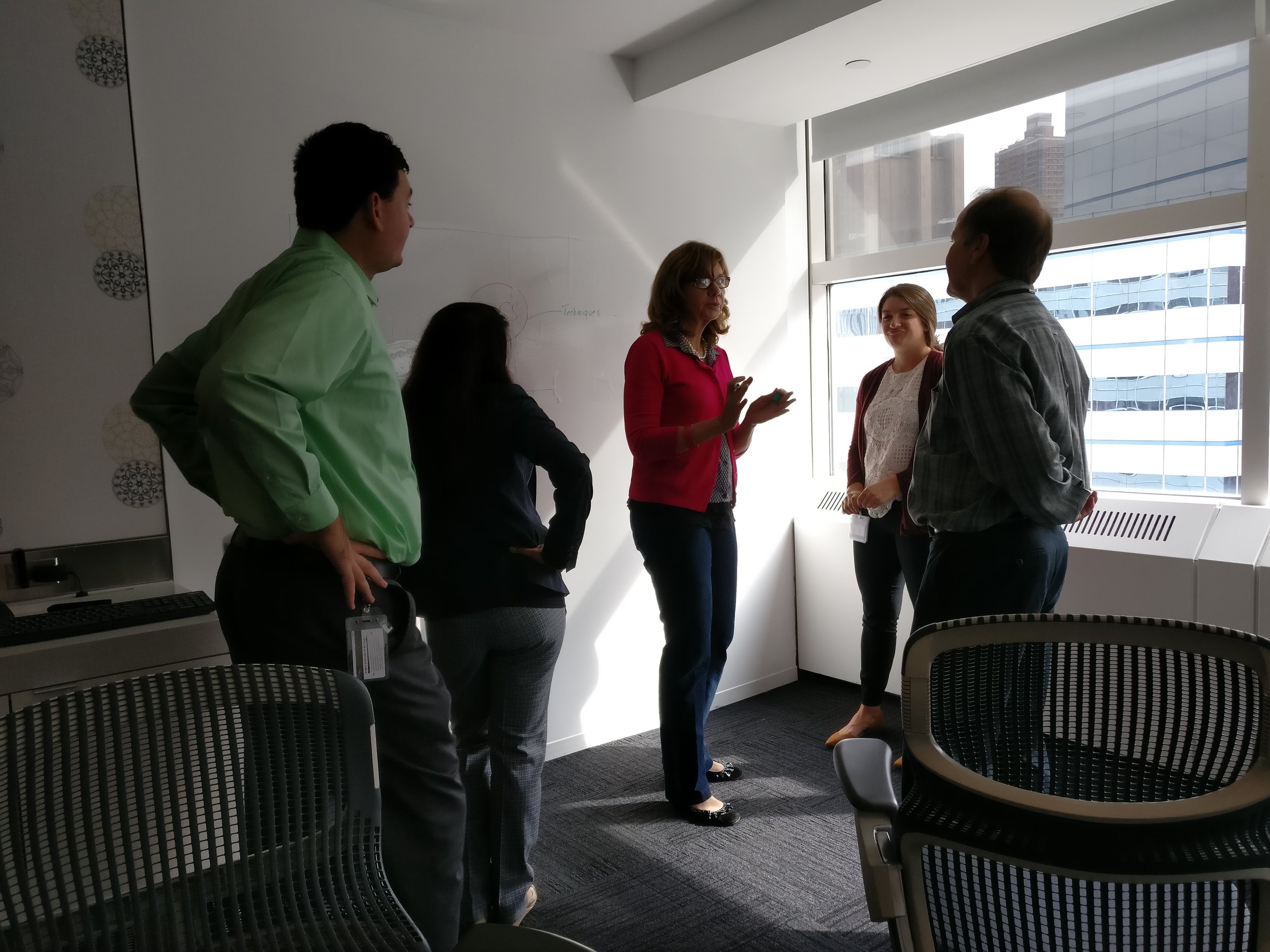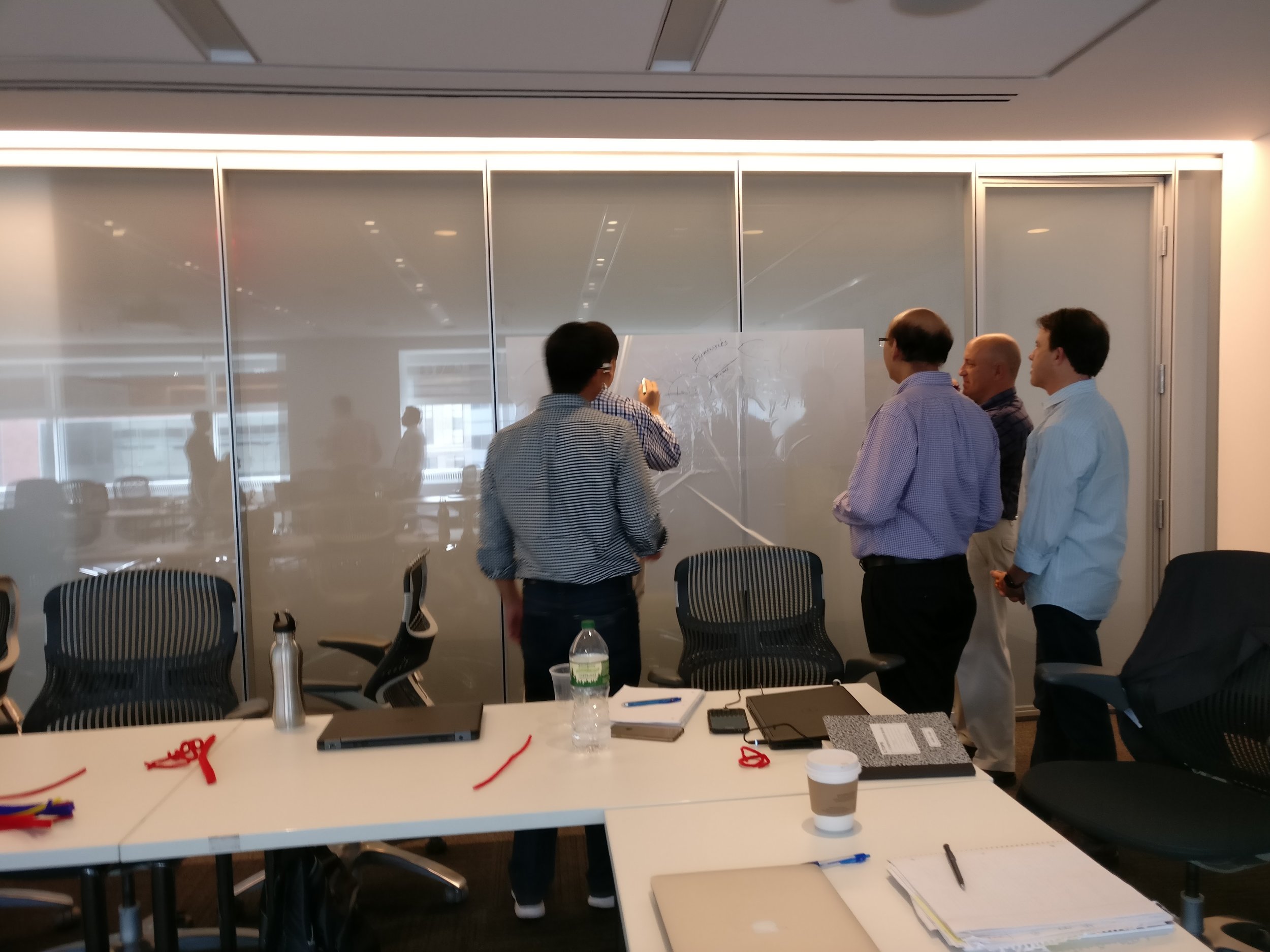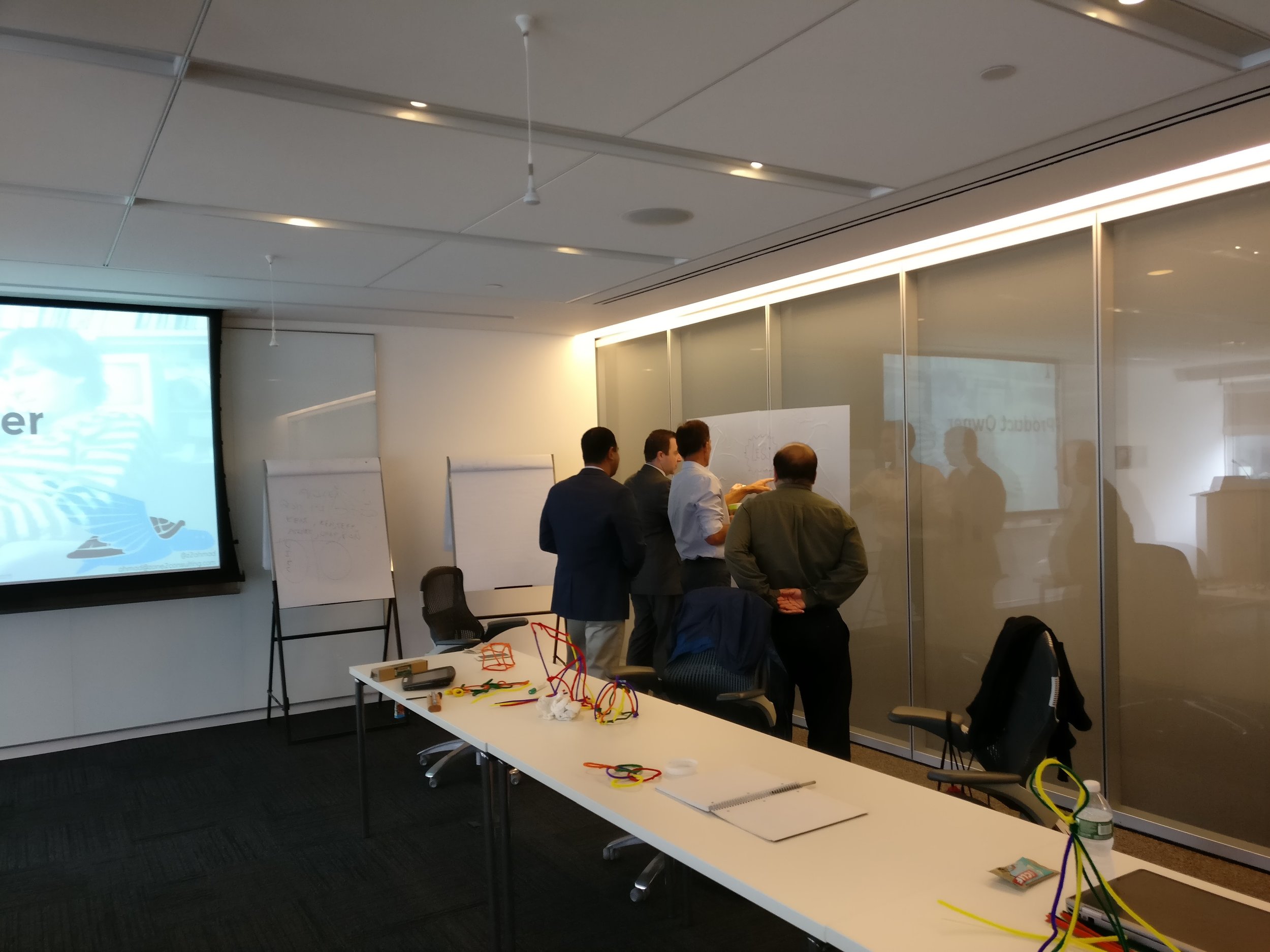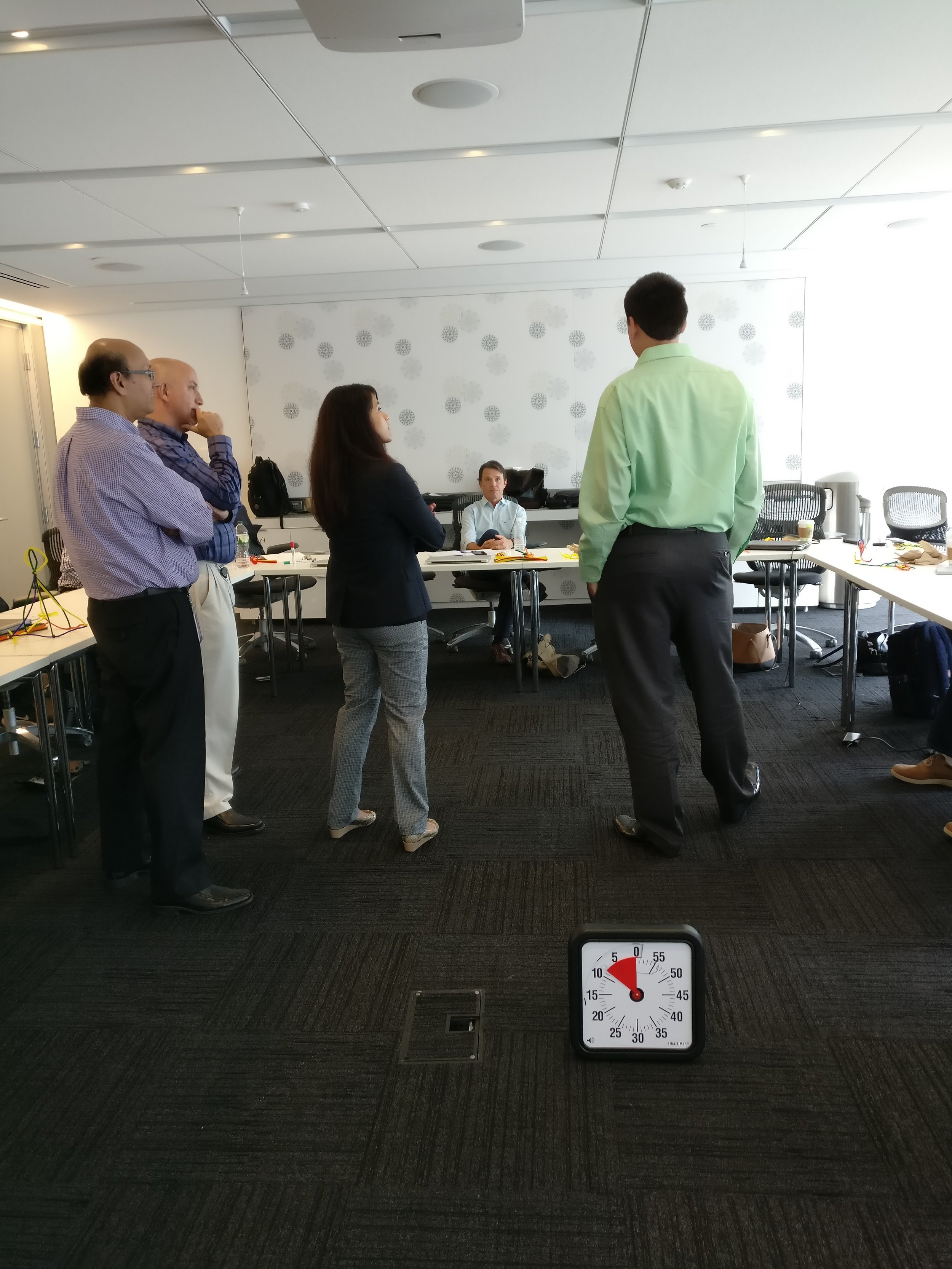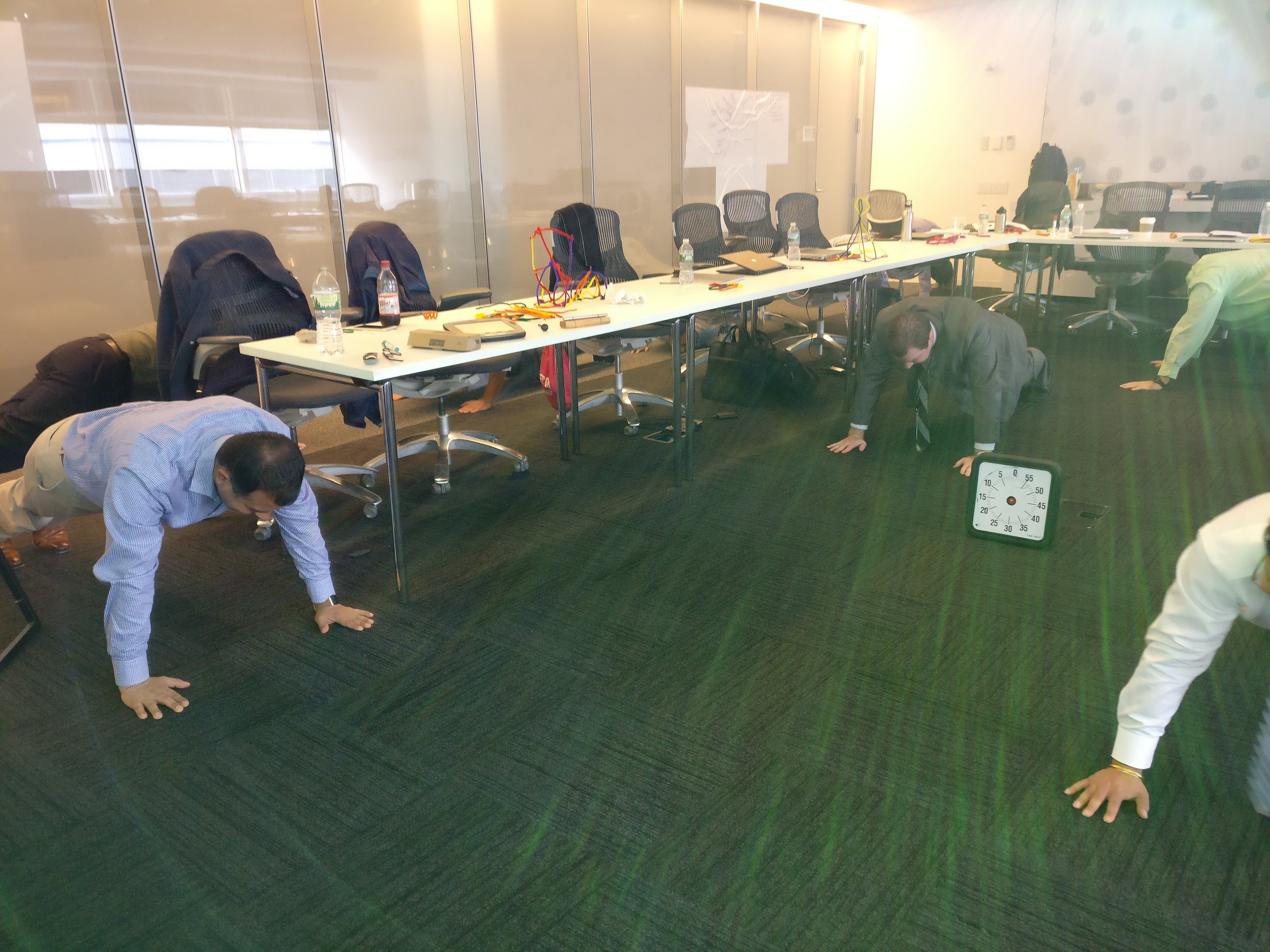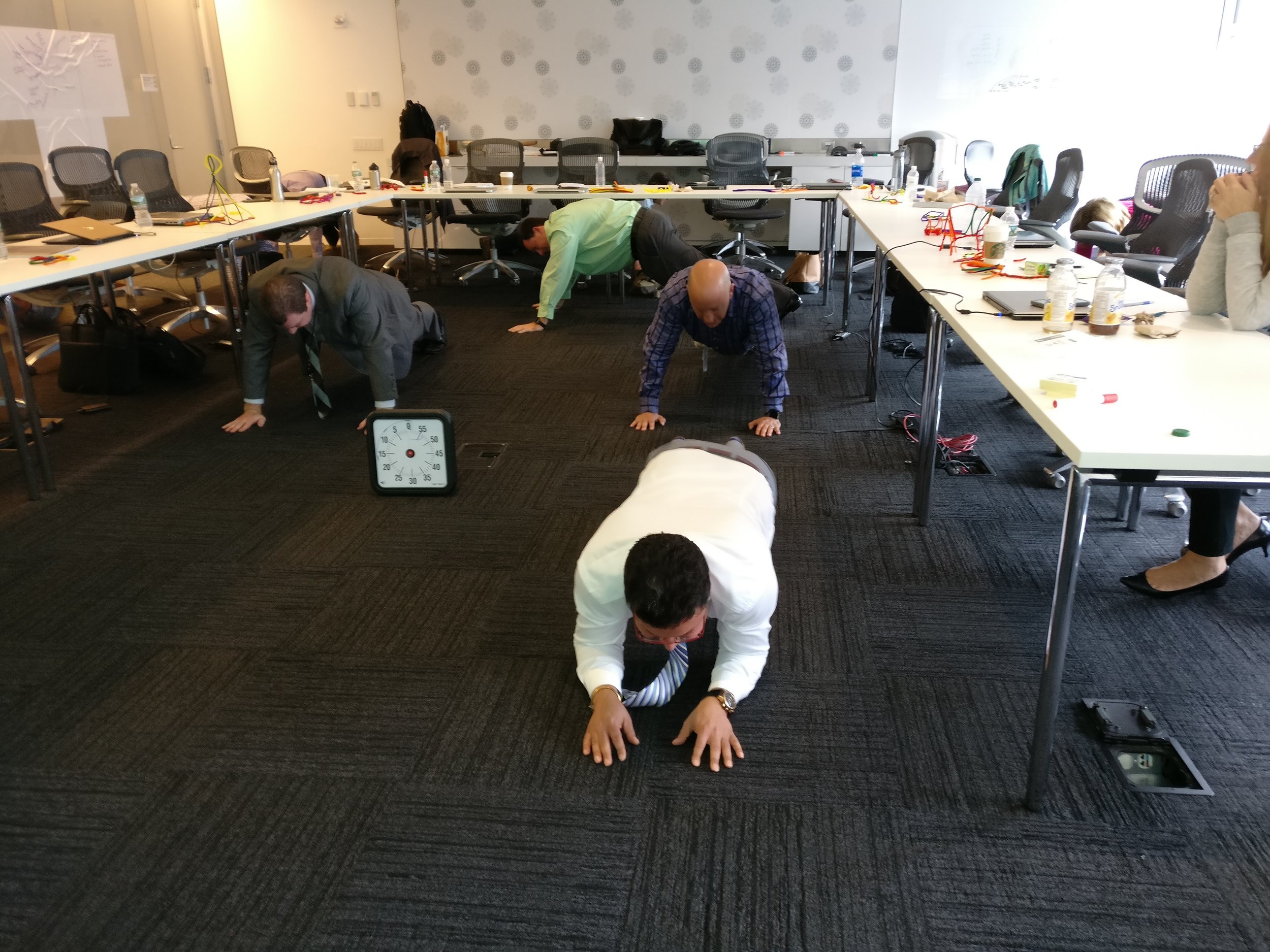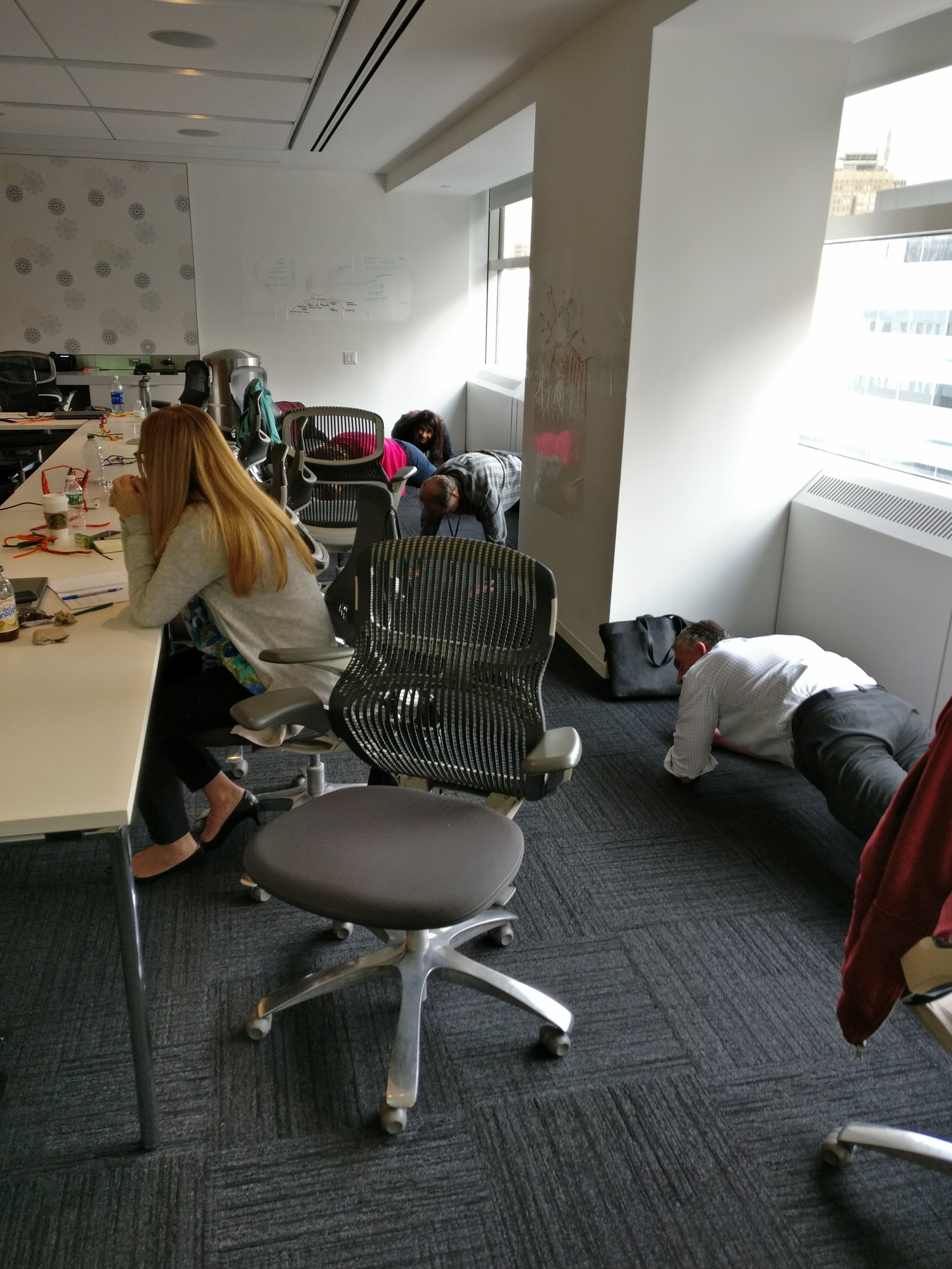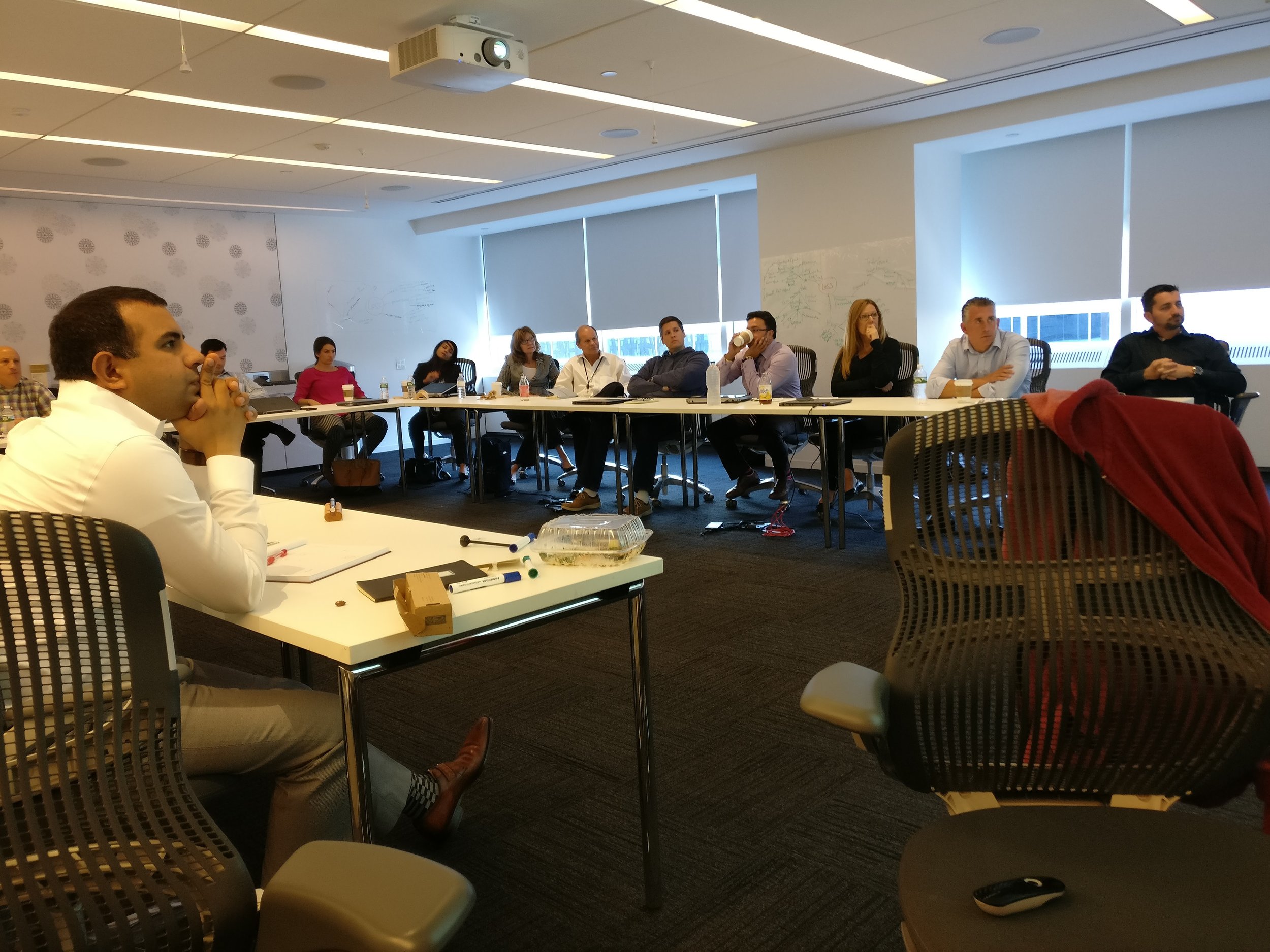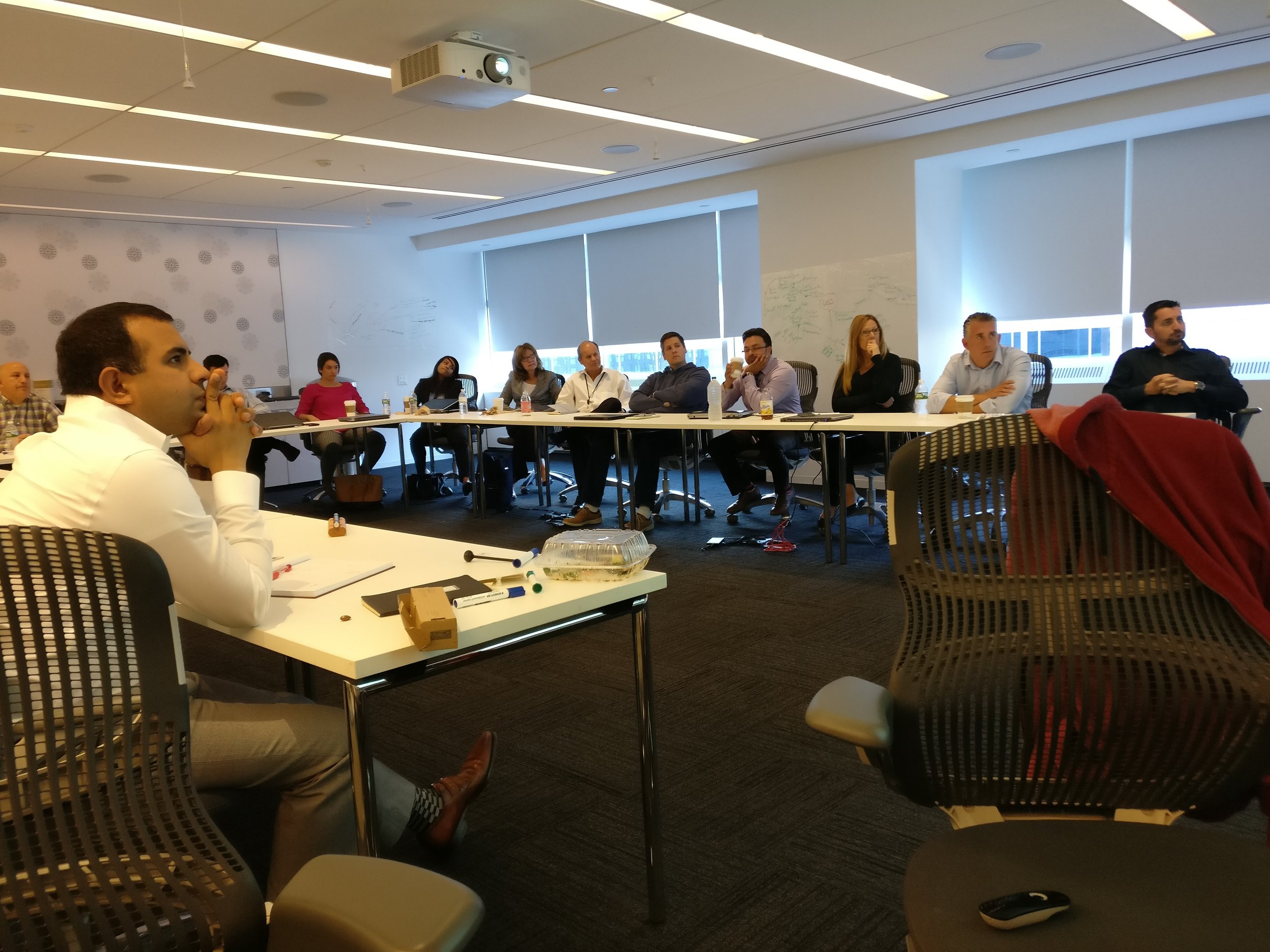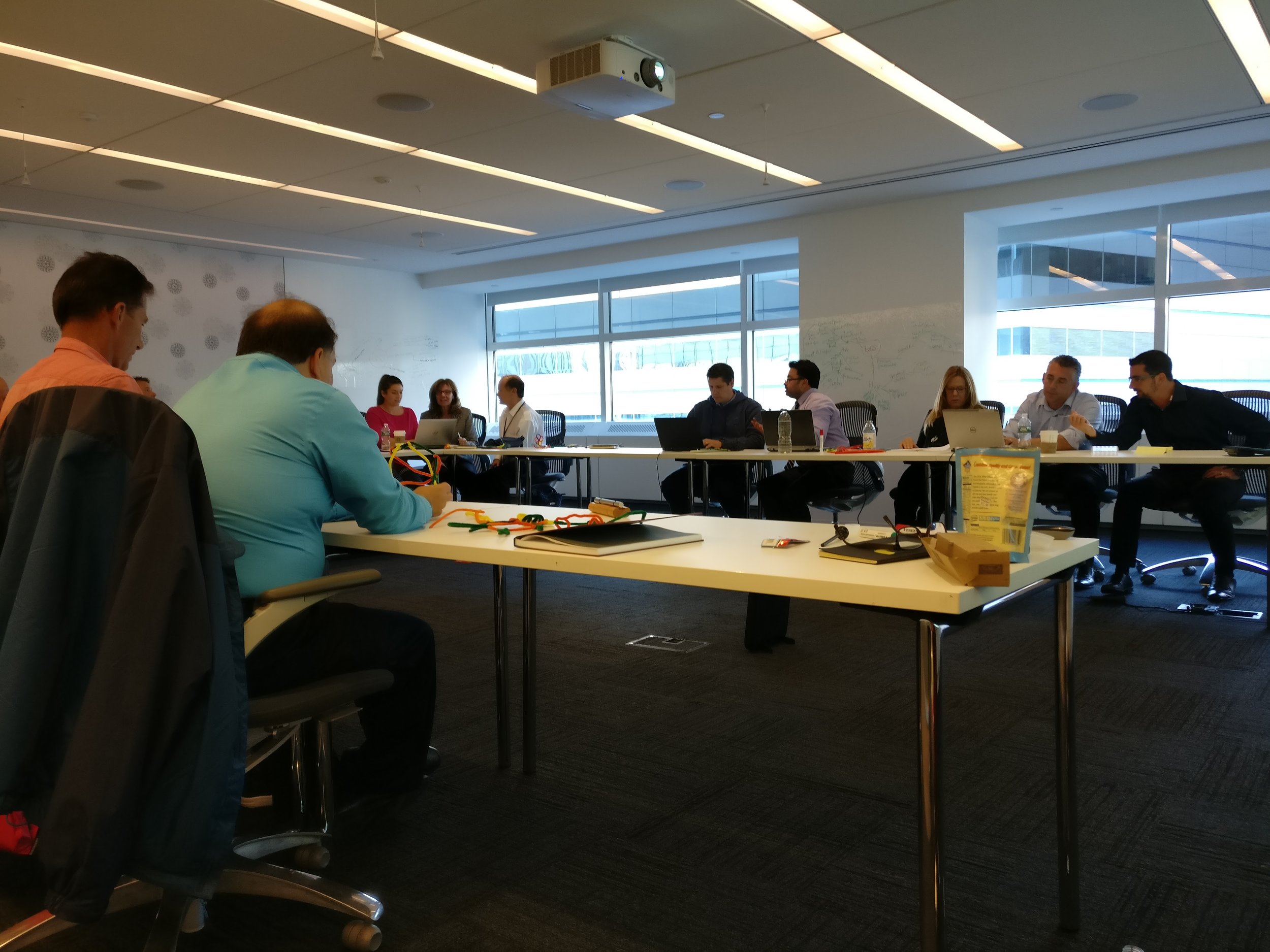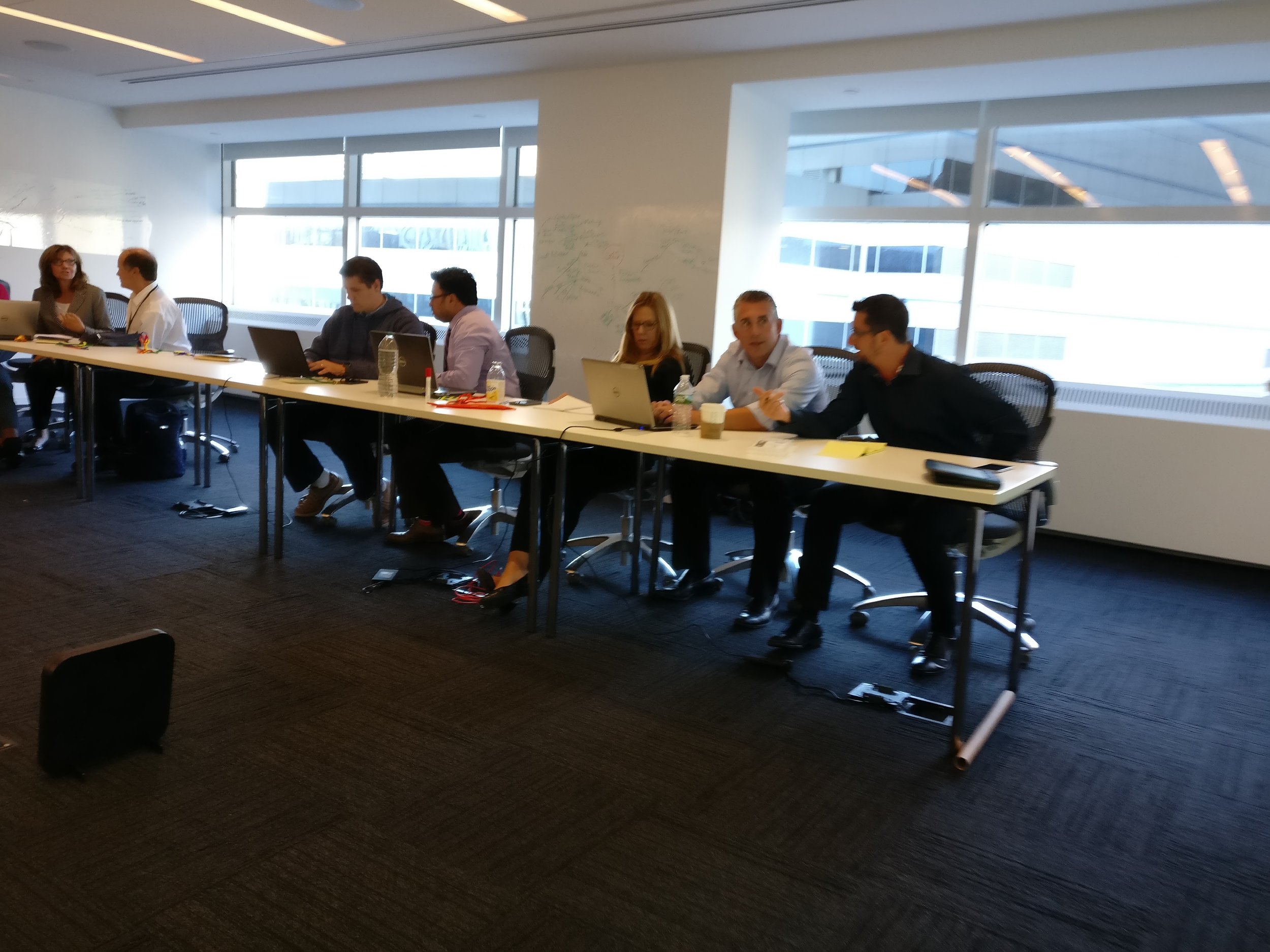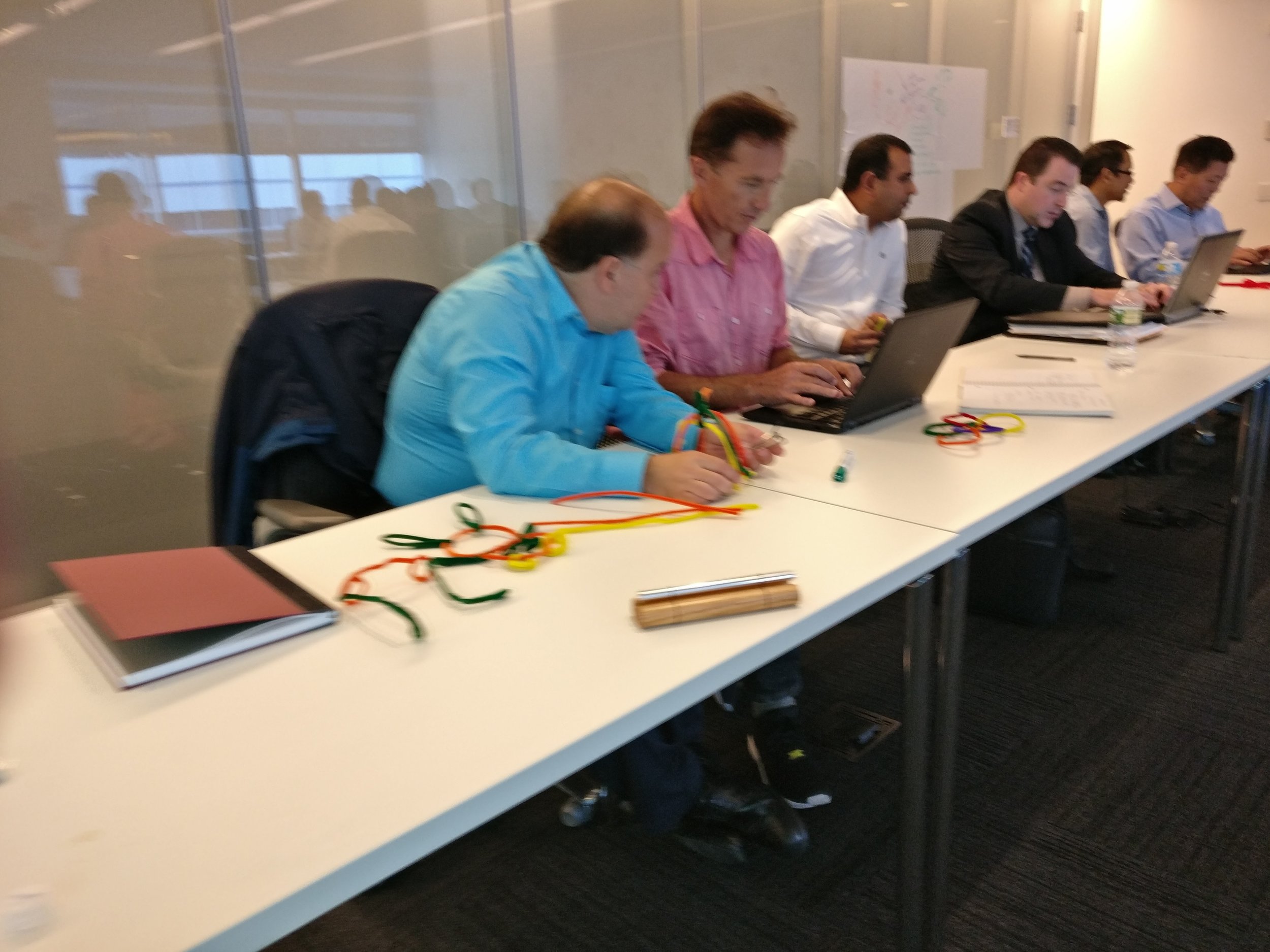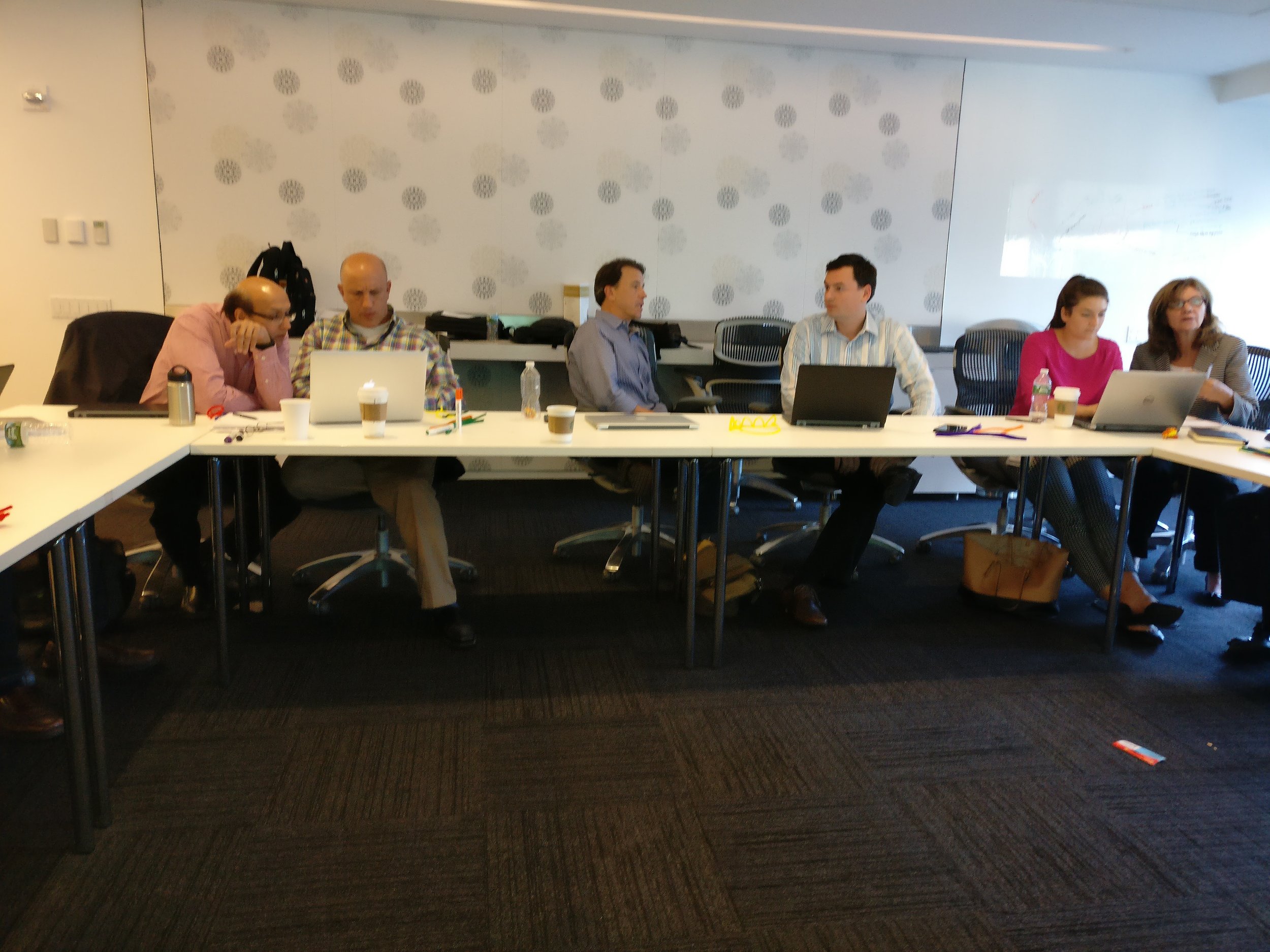Artefacts
- Class deck (Link)
- Class mind map(Link)
Note: Requires XMIND - Metrics Spreadsheet(Link)
- Printable Scrum Mindmap (Link)
Articles I mentioned
- Unfreezing an organization (Link)
- How to form teams at scale (Link)
- The taxonomy of A-Holes (Link)
- Running an impact mapping session (Link)
Books I mentioned
- The Five Dysfunctions of a Team
(Amazon)(video) - The Phoenix Project
(Amazon) - The Fifth Discipline
(Amazon)(Video) - Specification by Example
(Amazon)(Video) - The Art of Learning
(Amazon) - Hard Facts, Dangerous Half-Truths, and Total Nonsense: Profiting from Evidence-based Management
(Amazon)(Video) - Leading Teams
(Amazon)(Video) - Scaling Lean & Agile Development
(Amazon) - Lean Startup
(Amazon)(Video)
Hacks
- Become a faster reader using RSVP (e.g. Spreader)
- Prepare your speaking voice via repeating: " I slit the sheet, the sheet is slit, on the slitted sheet I sit" (Video)
- Mindmapping as a tool to retain and correlate information. (Video by Creator)
- Pomodoro technique (Video)
- Glucose Transporter type 4 (Link)
Class soundtrack
- Led Zepplin
- Cat Stevens
- Bruce Springsteen
- Grateful Dead
- Brian Adams
- My Saxobeat
- James Taylor
Class blog posts
LeSS – Day 1
By Scott and Abishek
Over the course of Day 1 in our 3 day LESS training which is designed to scale scrum across larger teams/projects in BNY. We adopted a repetitive learning approach where we covered high level the principles, people, process and adoption on day one and then will explore these concepts in much more detail on day 2 and day 3.
We utilized techniques like mind mapping, classroom exercise and instructor lead learning. Each methods of these yielded real-life examples of application and successes. One of the key evaluation was the queueing theory at Starbucks- separate queues for the people who wanted regular coffee vs special orders to expedite the delivery. Automating the orders through smartphone apps. At the same time, barista was limited to not more than 2 orders of coffee maintain the high quality. Similar technique can be applied in software processes by reducing the queueing of requirements by letting the team work in collaborative manner with product owners to create the requirement themselves. It also explains that by limiting the work queue hence increasing the throughput.
Also reviewing the principles outlined in the program allowed us to visualize or better understand where we at BNY could make significant strides for a better agile adoption. Specifically, a single product owner across x number of teams, co-location and dedicated scrum masters to help serve and support the value generating development teams. Product owner, location strategy and scrum master expertise are all quite immature in practice amongst many of the teams.
As a group we discussed the concept of waste within a system specifically how we may invest a lot of time in unnecessary waste tasks (like the beautification of communications and ppt) vs necessary waste like crafting wiki for teams to consume information.
We also learnt about an example of finding the root cause of the delay in delivery through the 5Whys and “Go See” technique. After some hesitation, senior Management (CIO/CTO) committed to meeting the team at different geographical locations with diverse culture, understanding the technical issue by casual conversation. It revealed the root cause as the non-realistic timeline given to the development team to build a feature that resulted in technical debt creating the overall code to become complex to change.
Looking forward to day 2!
LeSS Is More
By Ciara, Brian & Laureen
Today we attended the LeSS is More Agile Training for product development. This is the first day of a three-day training. Can you imagine changing the culture within your organization where someone with total understanding of the product is working with the team to add purpose and priority to your work? Well… it can happen to you as we learned today! How would you do this? By being part of a smaller team where labels do not exist. You have to trust one another to gain knowledge of the product together and learn the process.
All the while the customer is the primary focus as you are developing and working on the product. Increasing customer satisfaction by having your customer at the table and having accountability along with the team.
Working towards perfection helps to continuously learn and constantly apply what you’ve learned the day before. Infinite Improvement! Imagine spending 85 of your years perfecting the art of sushi and still not feeling satisfied with your work and ready to retire. A sushi chef in NYC works every day to continuously improve his work. He is not content with mediocrity and every day he is working towards perfection. Now take this lesson and apply it to your product development.
The TEAM….. small, no labels, no manager. What no MANAGER!! Teams will rely on each other to get the job done!
And, last but not least you deliver something viable after 2 weeks instead of waiting several months before testing and delivering what the customer does not want! Even though it may be smaller, it is something of value to the customer that can be applied to the system much quicker.
